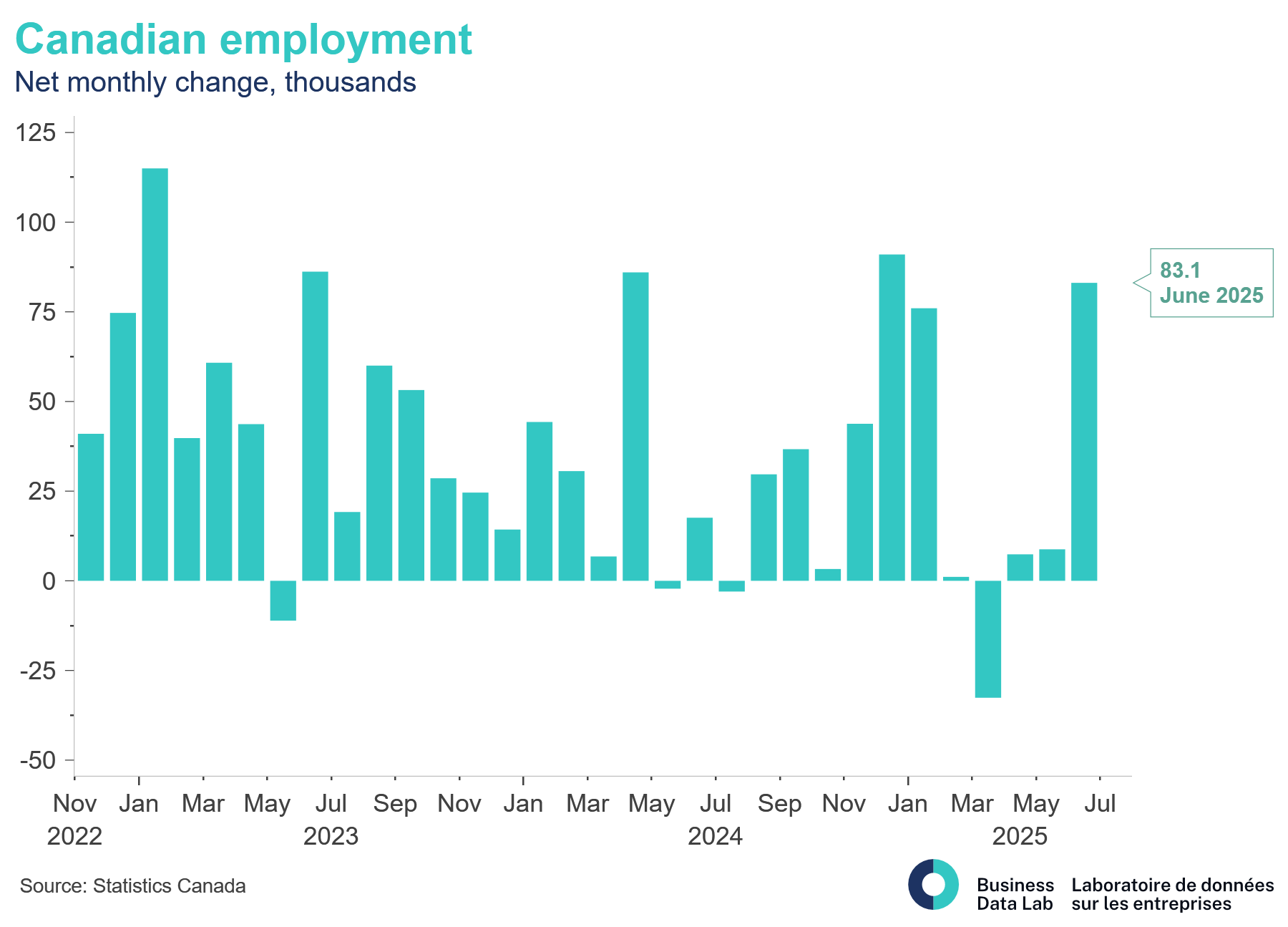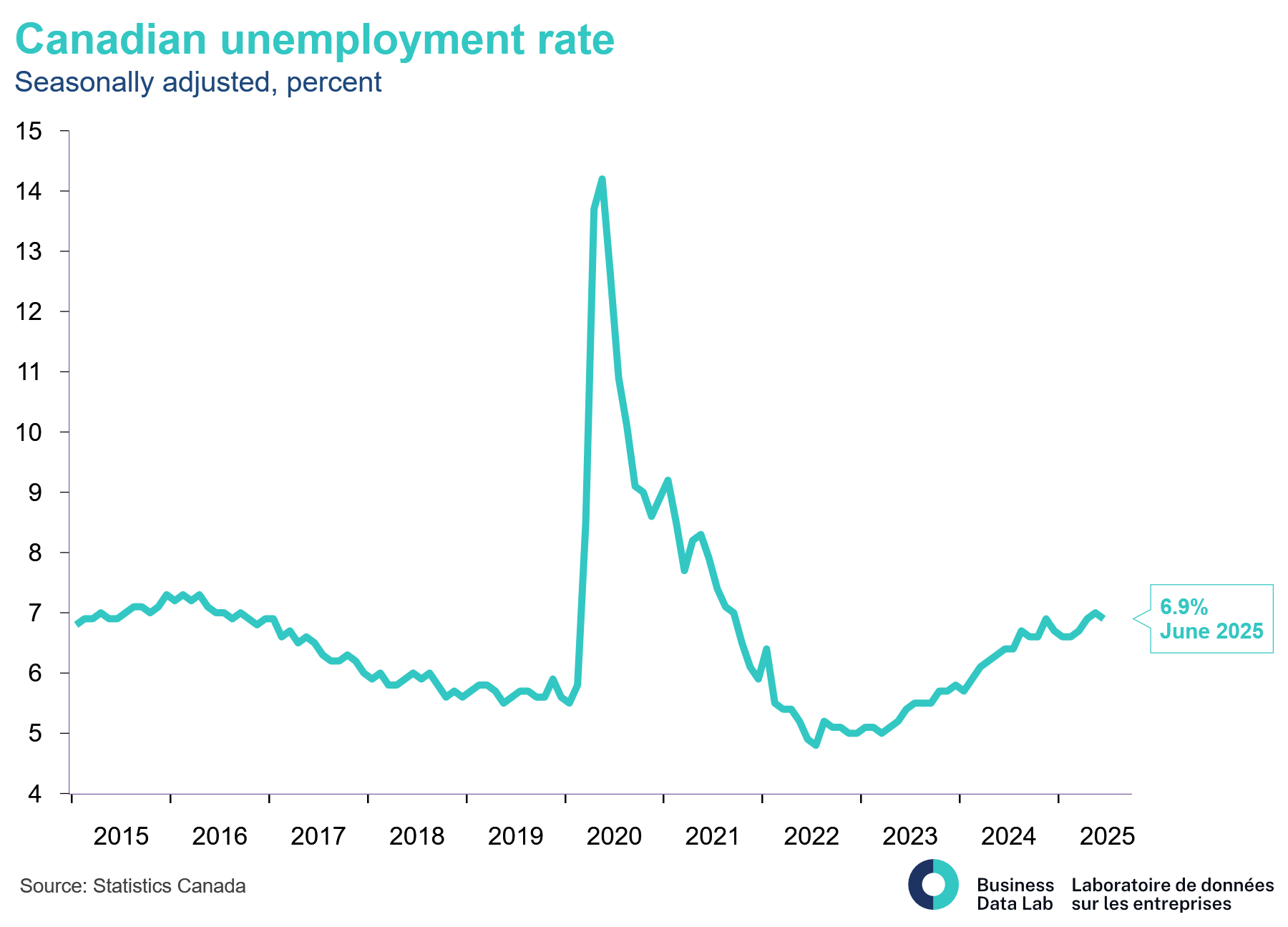Blog /
Labour Force Survey June 2025: Canada’s job market remains surprisingly resilient
June recorded the highest gain in employment (+83k, +0.4%), the first net employment gain since January 2025. Employment rate rose by 0.1 percantage points to 60.9% and unemployment rate is down by 0.1 percentage points to 6.9%.

“Canada’s labour market remains strong and resilient despite tariffs and counter-tariff measures. The market shows signs of marginal improvement across many parameters, a result of trade-partner diversification. Employment rose to its new peak for the year, especially in the manufacturing sector after consecutive declines. At present it is hard to gauge exactly when or if at all the impact of tariffs will break this momentum. But this outcome may nudge the Bank of Canada to deliver fewer than the two rate cuts in the remaining half of the year, as expected earlier.”
KEY TAKEAWAYS
- June recorded the highest gain in employment (+83k, +0.4%), the first net employment gain since January 2025. Employment rate rose by 0.1percantage points to 60.9% and unemployment rate is down by 0.1 percentage points to 6.9%.
- Both employment and participation rate are up by 1 percentage point to 60.9 and 65.4 respectively but declined on year-on-year basis. Total number of hours worked increased marginally on monthly basis (0.5%), but significantly year-over-year (1.6%).
- Demographically, employment level rose the most for core-aged (25-54) men (+62k, +0.8%), followed by core-aged women (+29k, +0.4%). With young workers finding it hard to find a job this summer, their employment levels remained relatively flat (+8.8k,0.3%), declined marginally for young men (-2.5k, -0.2%) and rose for young women (+11.2k, 0.9%). And, for senior workers, employment was down for both men and women (-3.5k, -0.1%).
- Geographically, Alberta leads the provinces with maximum gain in employment (+30k, 1.2%), followed by Quebec (+23k, 0.5%), Ontario (+21k, 0.3%) and Manitoba (+9k, 1.2%). Whereas, employment declined in Newfoundland and Labrador (-4k, -1.4% ), Nova Scotia (-3k, -0.6%) and New Brunswick (-1k, -0.3%).
- Industry-wise, the image is quite promising. Employment in services sector (+73k, 0.4%) was higher than in the goods industry (+10k, 0.2%). Despite the recent layoffs (9,000) due to the closure of Hudson Bay, wholesale and retail trade industry gained the most (+34k, 1.1%), followed by health (+17K, 0.6%) and professional services (+12k, 0.6%). The month-over-month increase in the manufacturing sector (+11,000 jobs, +0.6%) was both surprising and encouraging, especially after a string of declines since the start of the year. However, employment in the sector remains down 2.3% year-to-date.
- It is tough to estimate if this surge in employment will be repeated in the remainder of the year or not, but the June estimates have been a pleasant surprise. This temporary relieve only makes it harder for Bank of Canada to strike a balance between inflation and growth.

CHARTS

















